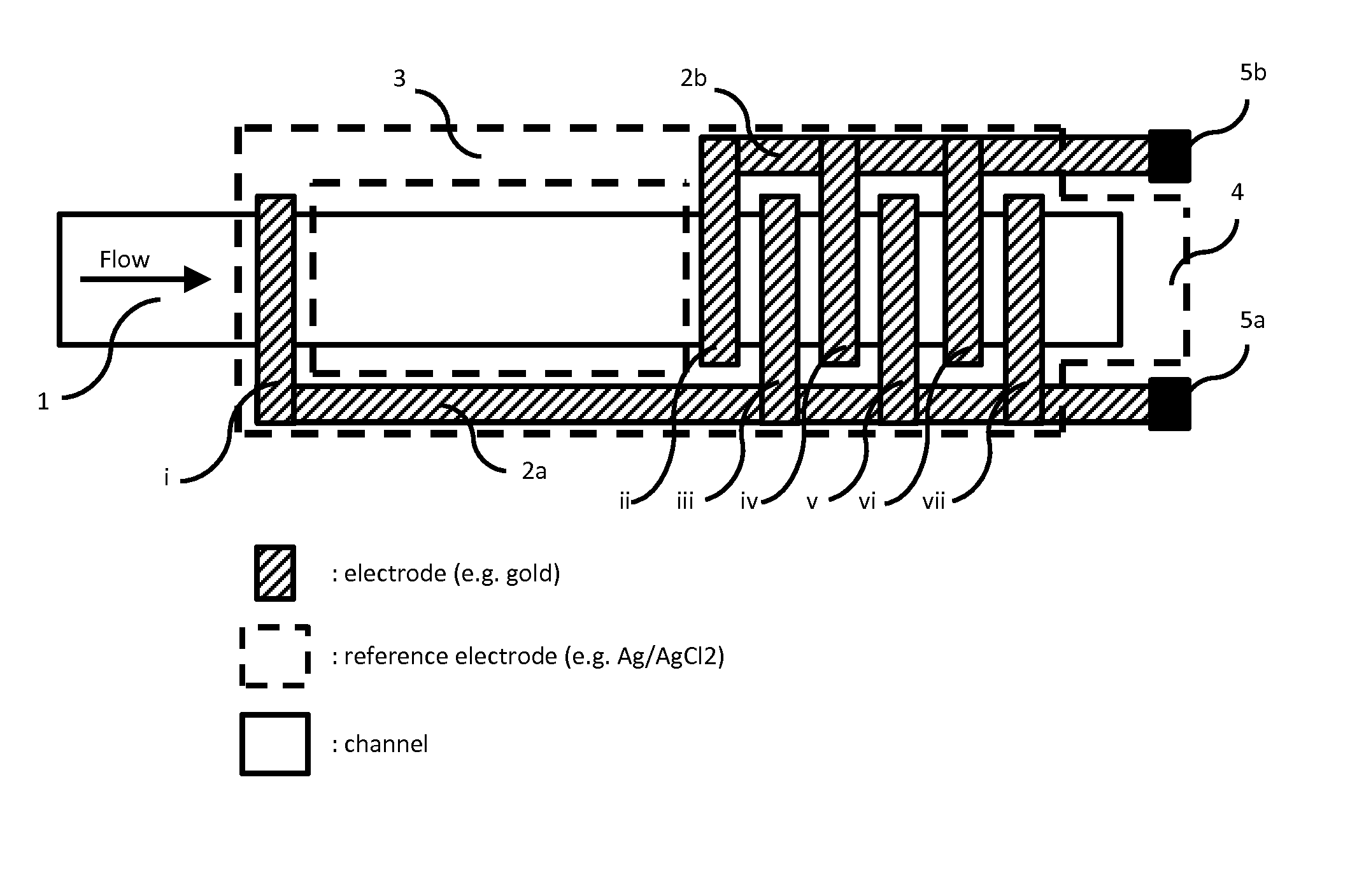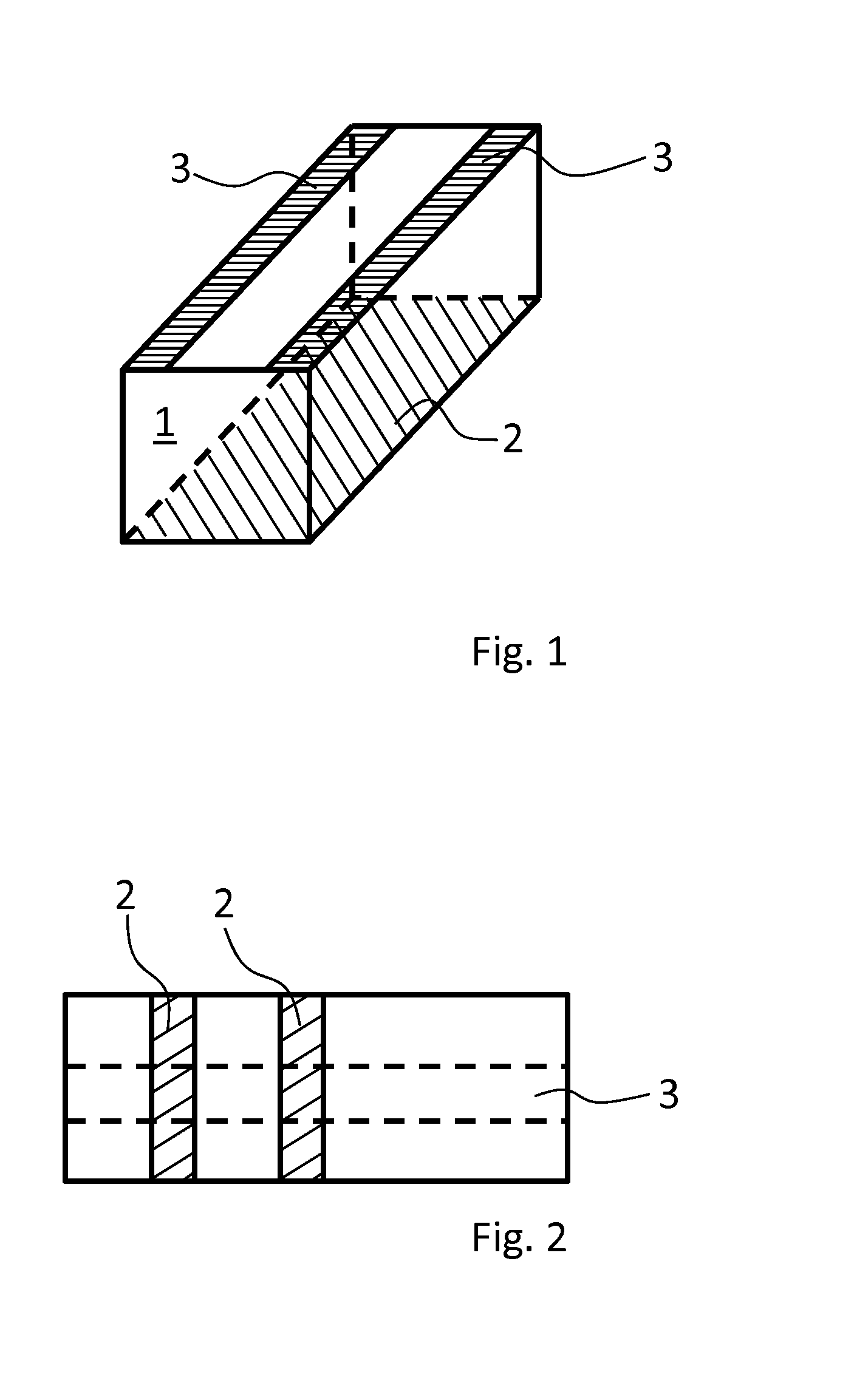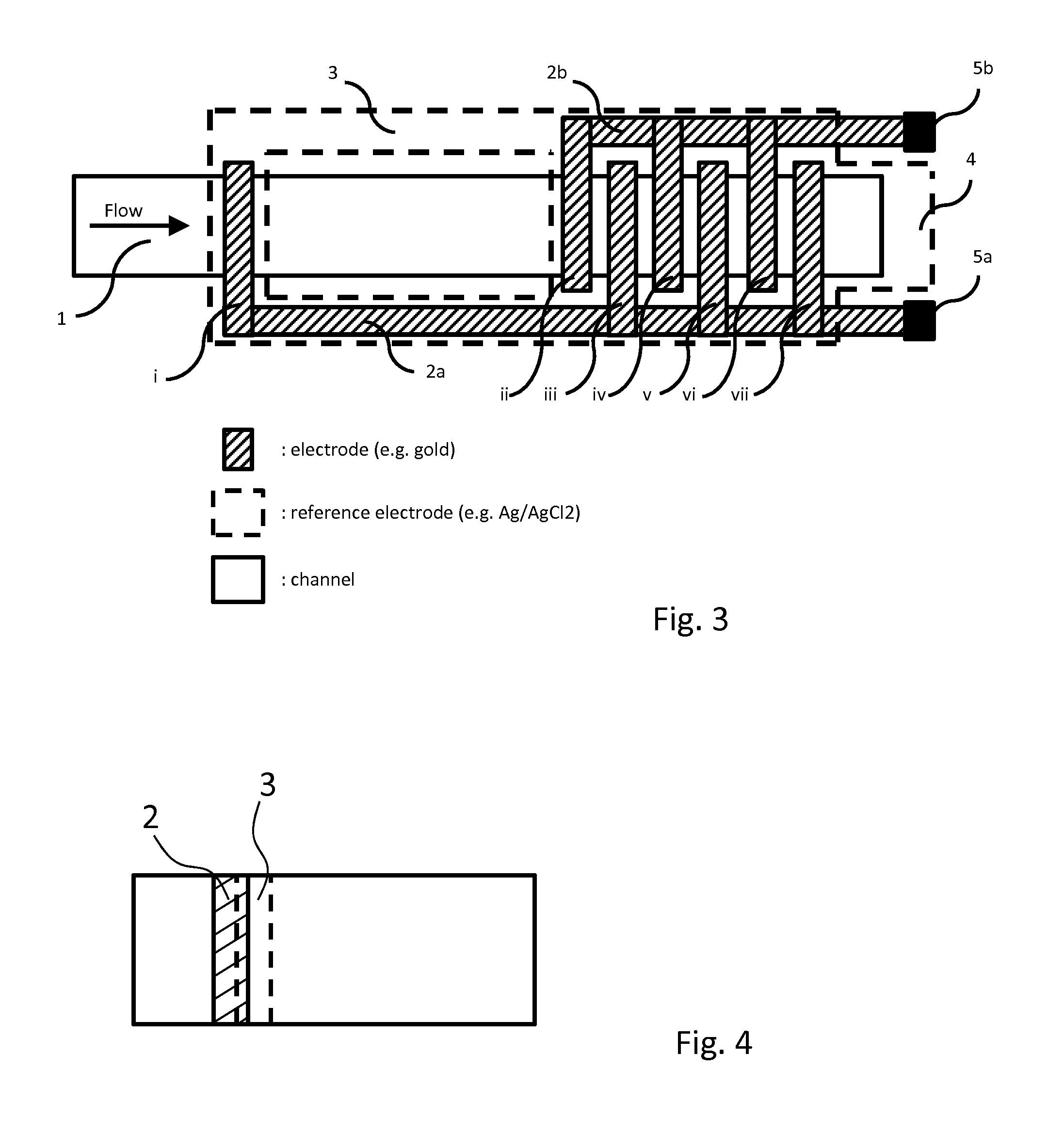On chip control of fluids using electrodes
a technology of fluid control and electrodes, applied in electrolysis components, positive displacement liquid engines, laboratory apparatus, etc., can solve the problems of reducing the amount of sample fluid that is possible to handle, affecting the reproducibility of diagnostic microfluidic-based tests, and reducing the speed of the fluid flow front with the distance travelled, so as to improve the ability of stopping, increase the hydrophobicity of the surface, and increase the hydrophobicity of the reference electrode
- Summary
- Abstract
- Description
- Claims
- Application Information
AI Technical Summary
Benefits of technology
Problems solved by technology
Method used
Image
Examples
example 1
[0098]The experiment described herein was done to determine the influence of reference electrode 3 placement on fluid flow length. In-house produced microfluidic chips were used for fluid flow tests to characterize electrowetting actuated fluid flow rate and length. Microfluidic chips were constructed by assembly of the following: a gold coated microscopic slide 2, a 73 μm self-adhesive spacer tape 8, a cyclo olefin polymer (COP) plastic film 9 as is, or with a screen printed silver / silver chloride reference electrode 3 facing the microchannel 1.
[0099]FIG. 6 shows the composition of the different layers of the microfluidic chips where the gold coated slide 2 make up the floor, the spacer tape 8 the walls, and the COP film 9 (including the reference electrode 3) the roof of the microfluidic channel 1. Thus, the microfluidic channel 1 or flow path 1 is here defined by a plane metallic electrode at the bottom, spacer tape 8 walls of the spacer tape 8 at the sides, and reference electro...
example 2
[0109]The experiment described herein was done to further examine and characterise the influence of reference electrode 3 placement on electrowetting actuated fluid flow rate and flow length.
[0110]Microfluidic chips were constructed by assembly of the following:
[0111]i) Cyclo-olefin polymer (COP) plastic film 9:[0112]a. 188 μm thick[0113]i. sputter coated with titanium and gold (50 Å titanium and 1000 Å gold)[0114]b. 100 μm thick[0115]i. as is[0116]ii. with a screen printed silver / silver chloride reference electrode 3 facing the microchannel 1
[0117]ii) 73 μm self-adhesive spacer tape 8.
[0118]Chip layers were assembled as described in Example 1. 20 μl bovine serum was used as fluid sample and was applied to the sample loading hole 10 of each chip using a micropipette. The fluid sample was allowed to settle in the sample loading hole for 30 seconds, to allow it to wet the COP film 9 edges bordering the loading hole 10, where after minus (−) 1.2 V was applied to the working electrode 2...
PUM
| Property | Measurement | Unit |
|---|---|---|
| voltage | aaaaa | aaaaa |
| voltage | aaaaa | aaaaa |
| length | aaaaa | aaaaa |
Abstract
Description
Claims
Application Information
 Login to View More
Login to View More - R&D
- Intellectual Property
- Life Sciences
- Materials
- Tech Scout
- Unparalleled Data Quality
- Higher Quality Content
- 60% Fewer Hallucinations
Browse by: Latest US Patents, China's latest patents, Technical Efficacy Thesaurus, Application Domain, Technology Topic, Popular Technical Reports.
© 2025 PatSnap. All rights reserved.Legal|Privacy policy|Modern Slavery Act Transparency Statement|Sitemap|About US| Contact US: help@patsnap.com



